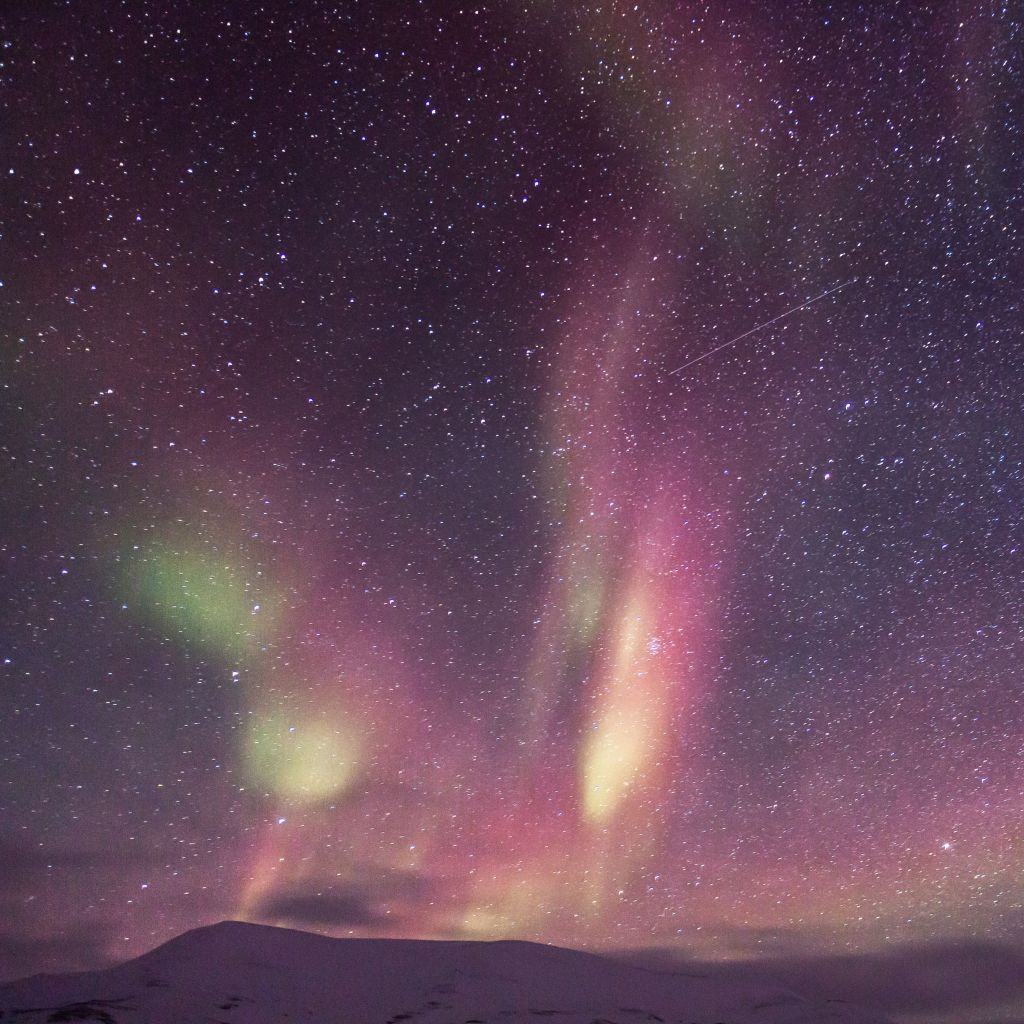This site contains affiliate links to products. I may receive a commission for purchases made through these links.
Ever gazed up at the sky, mesmerized by the vibrant, dancing colors of an aurora? It’s a spectacle that’s both breathtaking and mysterious. In this article, we’ll delve into the science behind these stunning light shows.
Auroras, often referred to as Northern or Southern lights, are natural light displays triggered by the interaction between solar winds and the Earth’s magnetic field. Understanding them is as fascinating as observing them.
Whether you’re a stargazer, a science enthusiast, or just curious, join me as we explore the captivating world of auroras. We’ll uncover how they’re formed, where to see them, and the best time to observe these celestial wonders.
How Auroras Are Formed
While their dazzling displays can leave one spellbound, the formation of auroras is science; not magic. The phenomenon begins about 93 million miles away – on the Sun. Occasionally, the Sun ejects a massive burst of gas known as a solar flare. These flares are full of particles, including protons and electrons, hurtling towards Earth at nearly a million miles per hour!
On arriving at Earth, they meet a formidable obstacle – our planet’s magnetic field. This protective layer shields us from these potentially harmful solar particles. Yet, it’s this very interaction that gives birth to the captivating spectacle known as an aurora. When the charged particles from the solar flare collide with atoms and molecules in our Earth’s atmosphere, they cause them to light up, resulting in a glow. This is similar to what happens in a television screen or a neon sign.
The specific color of an aurora depends on the particle collisions’ altitude and the type of gas involved. Oxygen, for example, produces a green or red light depending on the altitude. Moreover, the shape and movement of an aurora occur due to the alignment of Earth’s magnetic field lines. These provide a sort of ‘track’ along which the charged particles move, creating the characteristic dancing arcs and curtains seen in aurora displays.
The Interaction Between Solar Winds and Earth’s Magnetic Field
The next step in our understanding of auroras revolves around the quite fascinating aspect of solar activity. You see, solar winds—streams of charged particles from the sun—periodically hit our planet, affecting Earth’s magnetic field. Let’s dig deeper into this correlation.
It starts with solar flares, which are regarded as the most powerful explosions in our solar system. These eruptions blast particles into space, creating solar winds. Now these aren’t like the winds you’d experience on a breezy day. no, these are hurricane-speed winds filled with highly charged particles racing across space.
When these wide-ranging and relentless solar winds reach Earth, they primarily interact with our planet’s magnetic field. This field, stretching thousands of kilometers into space, acts as a protective shield, directing the solar wind around the Earth, like water around a stone in a river.
However, the magnetic field isn’t impenetrable. Some particles manage to penetrate it, particularly in areas where the field is weaker, i.e., near the magnetic poles. These spirited particles follow Earth’s magnetic field lines, essentially drawn towards the polar regions. Here, in the higher altitude of our planet’s atmosphere, they collide with various atoms and molecules—resulting in a release of energy, visible as the astounding aurora displays.
One important factor to remember is that the intensity of auroras does often correlate with solar activity. A period of increased solar activity will prompt stronger solar winds and, as a direct result, potentially more vivid and frequent auroras.
There’s not always a perfect sync though. There can be instances of high solar activity without a corresponding increase in aurora activity—and vice versa. That’s because auroras are also influenced by a number of other factors, such as the configuration of Earth’s magnetic field, atmospheric conditions, and seasonal variations.
While the interaction between solar winds and Earth’s magnetic field is crucial to aurora formation, it’s only one piece of the puzzle. The ever-changing dynamics between the sun and Earth create an intricate dance, one that we are still learning more about every day. Whether it’s the nuanced science behind the phenomena or the breathtaking spectacle they create, auroras never cease to amaze and inspire wonder.
The Phenomenon of Northern and Southern Lights
Auroras can mesmerize anyone fortunate enough to witness them, often appearing like brush strokes of light, painted across the night sky. Yet even as we marvel at their beauty, it’s essential to understand the science behind them and their relation to Earth’s magnetic field.
Northern and Southern Lights, also known as the Aurora Borealis and Aurora Australis, are some of Earth’s most spectacular atmospheric events. These vibrant displays light up the polar skies, eliciting awe and wonder from observers. We’ve already started diving into how solar particles and the Earth’s magnetic field play a significant role in the formation of these lights. Let’s take it a step further.
The interaction between solar particles and Earth’s magnetic field is a delicate and complex one. As solar winds relentlessly pummel Earth, the magnetosphere – the protective bubble shielding our planet– selectively allows some particles to penetrate. Near the poles, they collide with atoms in the Earth’s upper atmosphere (approximately 60 to 200 miles above the Earth’s surface).
Unraveling the mystery of aurora intensity has become a fascinating area of research. It’s understood that the intensity of auroras often corresponds with solar activity. Nevertheless, elements such as the orientation of Earth’s magnetic field, atmospheric conditions, and seasonal variations also have a pivotal influence on aurora formation and intensity.
Auroras are a captivating spectacle no matter when or where you observe them. Their intriguing dance – swaying, glowing, rippling in the sky – is a mesmerizing view, a visual symphony of solar and magnetic forces at play. And if you’re wondering, yes, the show’s always different due to the continual changes in solar activity and atmospheric conditions.
The understanding and observance of auroras may seem complex at first. But fear not! Delving deeper into the science behind these extraordinary lights can only heighten your appreciation for this magnificent celestial ballet.
Captivating Colors of Auroras
Diving into the vibrant colors of auroras, it’s undoubtedly a sight that leaves a viewer in awe. A myriad of colors paints the polar sky – from luminescent greens to rare, yet breathtaking, reds and blues. These magnificent hues aren’t just for aesthetic purposes though. They’re a vivid testament to the complex science that underpins auroras.
What gives these lights their captivating color palette? It all boils down to the types of gases in our Earth’s atmosphere and the altitude at which the solar particles collide with them.
Most auroras you’ll catch sight of appear green. This hue is a result of the charged particles colliding with oxygen atoms roughly 60 to 150 miles above our planet’s surface. From time to time, you might spot some purples and blues too. These are from reactions with nitrogen in our atmosphere at similar altitudes.
But what about the red auroras? Well, they are a little more elusive. If solar particles strike oxygen atoms at greater heights – about 200 miles above the Earth – we’re treated to a magnificent red display.
Let’s put this information into a table for a clearer understanding:
| Altitude (miles above Earth’s surface) | Gas | Aurora’s Color |
|---|---|---|
| 60 to 150 | Oxygen | Green |
| Similar to above | Nitrogen | Blue/Purple |
| About 200 | Oxygen | Red |
Now that you’ve got a basic understanding of what causes the various colors of auroras, wouldn’t it be splendid to view such a spectacle with your own eyes? To increase your chances of aurora spotting, it’s best to head to high-latitude regions during winter. The further north or south you are, and the darker and clearer the night, the better your chances to catch this remarkable light show.
Remember, the secret to successful aurora spotting is patience and persistence. Oh, and don’t forget your camera. With a bit of luck, you might just capture the celestial ballet’s wildly vibrant hues in all their glory.
Where to See Auroras
Auroras, those vibrant celestial ballets, are most commonly seen in high-latitude regions – these are your best bets for spotting this natural spectacle. As I’ve suggested, winter seasons generally offer clearer, darker nights and an increased chance of experiencing the northern or southern lights in their full glory.
Among the top places for aurora spotting, Alaska and Iceland are famous for their recurrent displays. Towns like Fairbanks in Alaska and Reykjavik in Iceland are particularly renowned. In these locations, the dark, clear winter nights provide an ideal backdrop for the lights to shimmer against.
Similarly, Scandinavia is no stranger to these magical light shows. Abisko in Sweden and Tromsø in Norway are popular locations among aurora-chasers. The famed Aurora Sky Station in Abisko frequently reports some of the most vibrant light displays.
If you’re in the southern hemisphere, fear not! Tasmania and New Zealand’s South Island are prime spots for catching the southern lights or Aurora Australis. In particular, Dunedin and Stewart Island in New Zealand offer good probabilities.
Here’s a quick reference table highlighting some of the top locations:
| Location | Optimal Season |
|---|---|
| Alaska, USA | Winter |
| Reykjavik, Iceland | Winter |
| Abisko, Sweden | Winter |
| Tromsø, Norway | Winter |
| Tasmania, Australis | Winter |
| South Island, New Zealand | Winter |
One important tip: don’t limit yourself to only observing auroras. Immerse yourself in the local culture, explore the breathtaking landscapes, and enjoy the unique experiences that these regions offer. After all, the journey is just as rich as the destination. So, pack your bags, bring your patience, and keep your camera ready. You just might get fortunate enough to witness an unforgettable light show painted across the night sky.
Best Time to Observe Auroras
Defining the best time to observe these celestial marvels isn’t easy, as it’s dependent on a variety of factors such as geolocation, season, and local weather conditions, let alone the unpredictable solar activity. Nevertheless, I’ll now break down some optimal times for witnessing these mesmerizing performances in the sky.
Winter months, specifically from September to March, mark the optimal season for aurora hunting. This is due to longer and darker nights, providing an excellent canvas for the light show. The darkness is crucial because it allows the vibrant colors of auroras to truly pop out.
While auroras occur throughout the year, solar activity tends to peak during the Equinox months of March and September. Solar winds carrying charged particles crash into Earth’s magnetic field more frequently during these times, enhancing the potential for more intense and frequent auroras.
Time of the day also plays a critical role. The prime time for aurora activity is usually between 9 PM and 2 AM. This is often referred to as the Magnetic Midnight due to the alignment of Earth’s magnetic field with the incoming solar winds, making it the ideal time to observe auroras.
Here is a convenient breakdown of these crucial viewing elements.
| Best Months | September to March |
| Best Hours | 9 PM – 2 AM |
| Increased Activity | During Equinox months (March and September) |
Remember, patience is vital. Even under optimal conditions, auroras don’t have a fixed schedule and may require long waiting periods. Furthermore, clear skies are crucial for viewing as cloudy nights can obscure the celestial light display. Therefore, always checking local weather forecasts should be part of your aurora hunting preparation.
Conclusion
So, we’ve journeyed through the science of auroras, their captivating colors, and how to best observe them. We’ve learned that these vibrant displays are not just beautiful, but a fascinating interplay of solar particles and Earth’s atmospheric gases. Going to high-latitude regions during winter increases your chances of witnessing this celestial spectacle.
Remember, patience, persistence, and a clear sky are your best allies in this quest. Whether you’re in Alaska or New Zealand, the auroras are a sight to behold. So grab your camera, and let the aurora hunt begin. It’s an experience you won’t want to miss.







